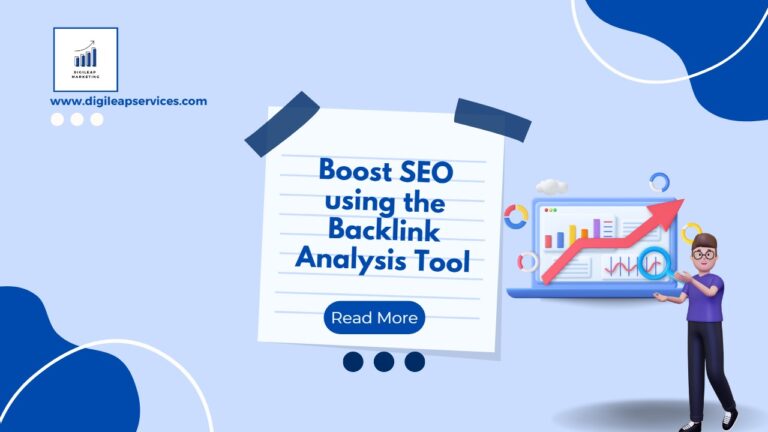SEO Checklist for 2023
SEO is a complicated and ever-changing subject, and it may be tough to stay up with the current developments. However, to stay ahead of the competition, you must stay current on the newest SEO checklist best practices.
The good news is that we have created a complete SEO checklist for 2023. This checklist will assist you in optimizing your website for the most recent search engine algorithms and ensuring that, you are getting the most out of your SEO efforts.
So, what are you waiting for? Begin following the SEO checklist for 2023 right away!
Technical SEO Checklist
Here is a checklist of things you should do in 2023 to boost the SEO of your website.
1. Register your website with Google Search Console. This will allow you to monitor the performance of your website and discover any potential crawl issues.
2. Crawl your site and correct any crawl issues. These issues can prohibit Google from indexing your pages and can influence your website’s search rankings.
3. Ensure that your pages load rapidly. Users may become frustrated and leave your website if it takes too long to load.
Checklist for On-Page SEO
To optimize your website for search engine visibility in 2023, you will need to register with both Google Search Console and Bing Webmaster Tools and follow their optimization guidelines.
You will also need to conduct keyword research to find the primary keyword for your website. After you’ve decided on a primary keyword, You will need to optimize the content on your website for that term. This involves including the term in the title, body of the content, and metadata.
Checklist for Off-Page SEO
You must do much more than simply focus on on-page optimization to optimize your website for SEO. Off-page SEO tasks like keyword research and link development are also required.
Keyword research is critical in SEO. You must determine which terms your target audience is likeliest to utilize while searching for information about your product or service. Then, make sure that your website’s content incorporates those keywords.
On-page SEO should also be applied to content. This entails employing the target keywords across the content, including the title, meta description, header tags, etc. Supplemental information, such as photographs and videos, can also be used to assist optimize your content.
Checklist for Mobile SEO
As more people use smartphones as their primary way of online browsing, it’s more critical than ever to ensure your site is mobile-friendly. Here are some steps you can do to ensure your site is mobile-friendly:
Optimize your Google My Company listing – Make sure your NAP (name, address, phone number) is current and correct, as well as your business hours. You should also include photographs and a description of your company, products, or services.
Use HTTPS – encryption is essential for keeping your website’s data secure, and it is also a Google ranking criterion. If your website does not use HTTPS, you may be losing traffic and ranking possibilities.
If your website can be visited via numerous domains (e.g., www.example.com, example.com, or http://example.com), Google may consider it duplicate content and punish you in the SERPs. To avoid problems, pick one domain and stay with it.
Checklist for Local SEO
If you haven’t already started implementing local SEO strategies, now is the moment. Here’s a list of steps you can do to get started:
1. Improve the visibility of your Google My Business listing.
2. Incorporate regionally relevant keywords into your material.
3. Make sure that your website is mobile-friendly.
4. Begin with the fundamentals of SEO.
5. Take control of your listing in directories and review sites.
As Part of Your SEO Strategy, Conduct a Competitor Analysis
You should include competitive analysis as part of your SEO strategy. This assists you in understanding what your rivals are doing successfully and where you may improve on their plan.
Your 2023 SEO checklist should include all facets of optimization, including technical, on-page, and off-page optimization. Include goal keywords in appropriate places on your website, and track your success to alter your strategy as needed.
Title Tags
What is a title tag?
An excellent Title Tag is like a great headline— it both attracts the reader and delivers enough information about the subject to signal what someone may expect to discover in the content.
The title tag is an HTML element, within the head section, which is shown within the tab of a browser and as the blue letters within search results (usually*). Each page = 1 title tag.
Difference between the Page Title and Title Tag?
The title tag is the material defined by the site owner within the HTML tag.
The page title is what Google shows inside the search results. The page title may be the title tag, the first heading— the term “electronic commerce” refers to the sale of electronic goods.
Length of title tag characters
A title tag between 50 & 60 characters long.
Are titles included while ranking?
Title tags are regarded as a ranking element as they serve to educate search engines about the primary content of the page. They can also influence search click-through rate (CTR). Using dates, figures, queries, and calls-to-action can assist boost your search CTRs.
According to Google’s documentation:
Do include a title tag for each page of your site
Create distinct descriptive titles.
Include keywords (without keyword stuffing)
Take advantage of branding in your titles.
Common title tag blunders
Missing, redundant, non-descriptive, or misleading title tags are common errors.
Example of an unoptimized Title: Home
Optimized title example: Seer Interactive: A Big Data Digital Marketing Agency.
Checklist for SEO in 2023
Here’s what you need to do to have your website ready for 2023:
1. Incorporate your goal term into relevant areas on your website, such as the title, meta tags, header tags, and body text.
2. Speed up your photographs by compressing them and utilizing appropriate alt tags.
3. Make certain that your website is mobile-friendly and runs swiftly on all devices.
4. Use original, high-quality material to attract and engage visitors.
5. Use Google Analytics to track the success of your website and make modifications as needed.
You can ensure that your website is optimized for 2023 and beyond by following these easy guidelines.
Conclusion
That’s all there is to it —the ultimate SEO checklist for 2023. Please bookmark this website and come back frequently, as we will update it as new changes and upgrades to the SEO landscape occur. And if you have any queries or need assistance getting started, don’t hesitate to contact our SEO professionals!












